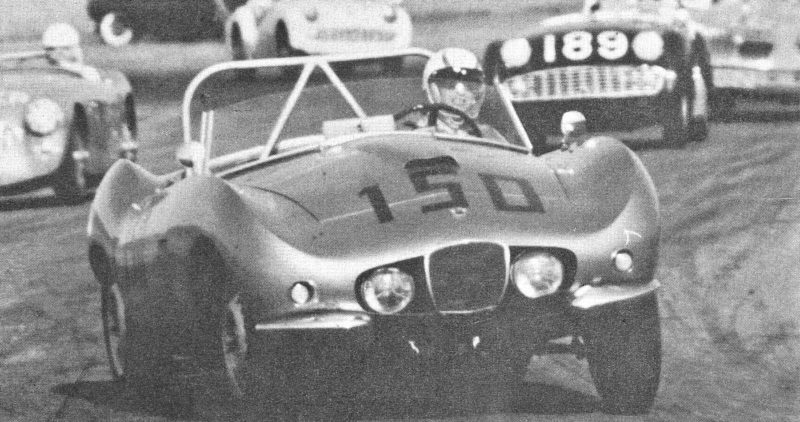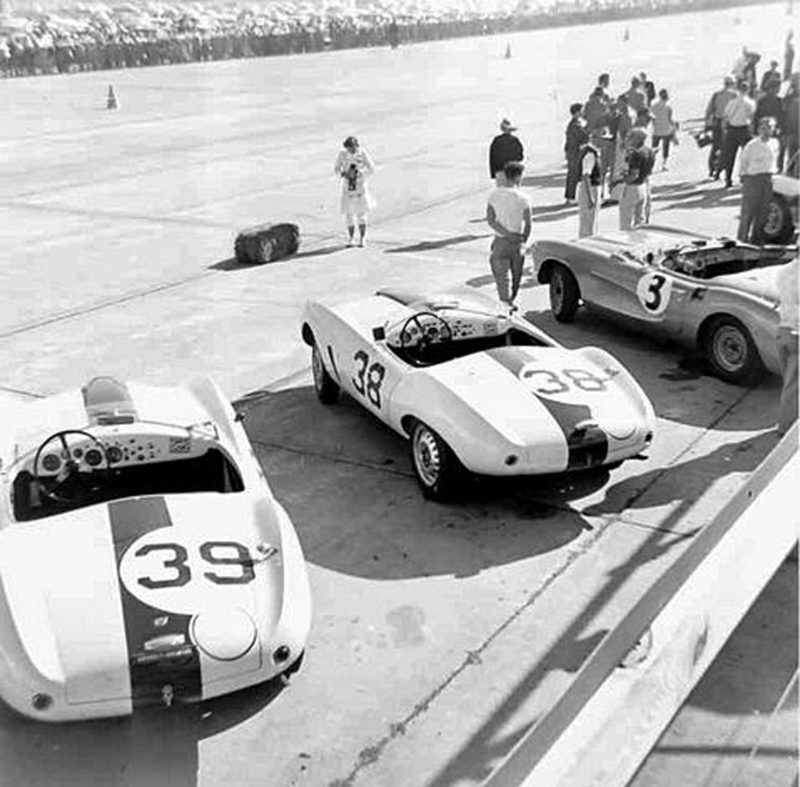Notes From The Archives – Arnolt Bristol
March 22, 2018Arnolt Bristol
Words by: Gary Horstkorta
Stanley Harold Arnolt II couldn’t have had better timing when he purchased a struggling marine small engine company, the Waukesha Engine Company in 1939 and moved it to Warsaw, Indiana. Combing his degree in Mechanical Engineering with a good business sense and with World War II on the horizon, the military would need a good, small marine engine for all sorts of applications.
When the war started he was ideally positioned to supply thousands of these motors along with a variety of spotlights and never looked back. By wars end, he had built a diverse industrial empire which easily transitioned into the post-war economy. Having moved into the category of a wealthy industrialist, he took up flying and indulged in one of his early passions, automobiles.

Stockton 59 – Paul Crawley
Arnolt bought an MG-TC and opened a foreign car dealership in Chicago and eventually became the BMC distributor for the Midwest, helped no doubt by his acquisition from the factory of 1,000 Morris Minors! Sometime in this period he picked up the nickname of “Wacky” perhaps based on his penchant for becoming involved in wildly diverse companies.
As his automobile holdings grew, he conjured up the idea for a car of his own making which would carry his name. To pursue this idea, Arnolt flew off to Turin for the 1952 automobile show which featured all the Italian custom coach builders. He had previously met Nuccio Bertone in the U.S. so headed straight for his display. In a deal that essentially saved Bertone from going out of business, Wacky ordered 200 MGs with Bertone bodies, 100 GTs, 100 Cabriolets. He arranged with MG to ship the cars to Bertone for completion and shipment to the U.S. These became known as the Arnolt MG and were handsome and reasonably priced especially for an Italian coach built car.

John Schonle No. 30 – Stockton 1957
Arnolt was also the exclusive distributor in the United States of the Bristol line of cars. Bristol was eager to supply chassis for a possible Arnolt car and with a reliable six-cylinder engine and aircraft construction techniques (W W II Bristol Beaufighter, Bristol Blenheim) they were just what Wacky was looking for. In 1953, he had Bristol rework their model 404 chassis to accept an Italian roadster body designed by Bertone. For sports car racing the car had to be lightweight and aerodynamic and the finished design was of course called the Arnolt-Bristol.
The Arnolt-Bristol was a beautiful creation with very smooth, curving lines of the steel body devoid of any body decorations except for headlights, tail lights, windshield. Weighing in at 2100 pounds with full tanks and powered by the Bristol straight six, 130 hp engine, the cars top speed was 110 mph which was quite good for 1954. With well known Fred Wacker in the driver seat of a factory car, he tied for the E Modified national title. By 1955 Bertone had completed 25 cars which allowed them to be classified as limited series production sports cars for GT racing.

Unidentified Arnolt Bristol driver at Laguna Seca 1958
In 1955, Arnolt sent a team of three cars to Sebring 12 Hours race and couldn’t have asked for a better result as his cars finished 1st, 2nd and 4th in the under two liter production class. The balance of the year the Arnolt-Bistol Team competed in nine SCCA races with six class victories but the handwriting was on the wall as the more numerous and factory backed Triumphs, AC Aces and Morgans were proving to be faster and regular winners. By 1959, the last of the 142 Arnolt-Bristols originally ordered was completed and shipped to the U.S. thus ending an interesting chapter in Wacky Arnolt’s life.

Two of three Arnolt Bristol at Sebring 1956
On the West Coast, Arnolt-Bristols enjoyed seven-year run in SCCA San Francisco Region competition with Scott Baxter driving the first one to appear on the grid at Stockton in March 1956 where he finished 3rd in class. This was followed by races at Pebble Beach (15th), Santa Rosa (5th), Buchanan Field (1st) and Sacramento (10th). More cars appeared in 1957 with Baxter, John Shonle and Pat Mahoney entering races with some success.

Bob Potter Laguna Seca 1958
1958 saw Bob Potter as the only driver entering an Arnolt-Bristol with top ten finishes at Tracy and Laguna Seca. Harold Archibald and Paul Crawley along with Potter also competed in their cars in the 1959 season for events at Stockton and Tracy but moved on to other cars for 1960. Larry McNutt and Dan Holland drove Arnolt-Bristols throughout 1960 and 1961 with Holland continuing into 1962. However, this was the last year an Arnolt-Bristol appeared in an SFR race as it was no longer competitive in its class.
A few of these Anglo-Italian-American cars can still be seen at vintage races and a number of them also survive as road cars. Recently, an Arnolt-Bristol was found in a local garage which had been raced but its history is not completely known at this time. Could it be one of the cars that raced with the San Francisco Region back in the day? Hopefully we will soon find out.
